Everything You Need to Know About Medical Practice Websites
According to a Software Advice survey of nearly 500 patients, over a quarter of their primary care providers do not have websites for their medical practices. That’s understandable when you consider all the things doctors have to think about before creating one: HIPAA codes, ethical standards, professionalism and time constraints, to name a few barriers.
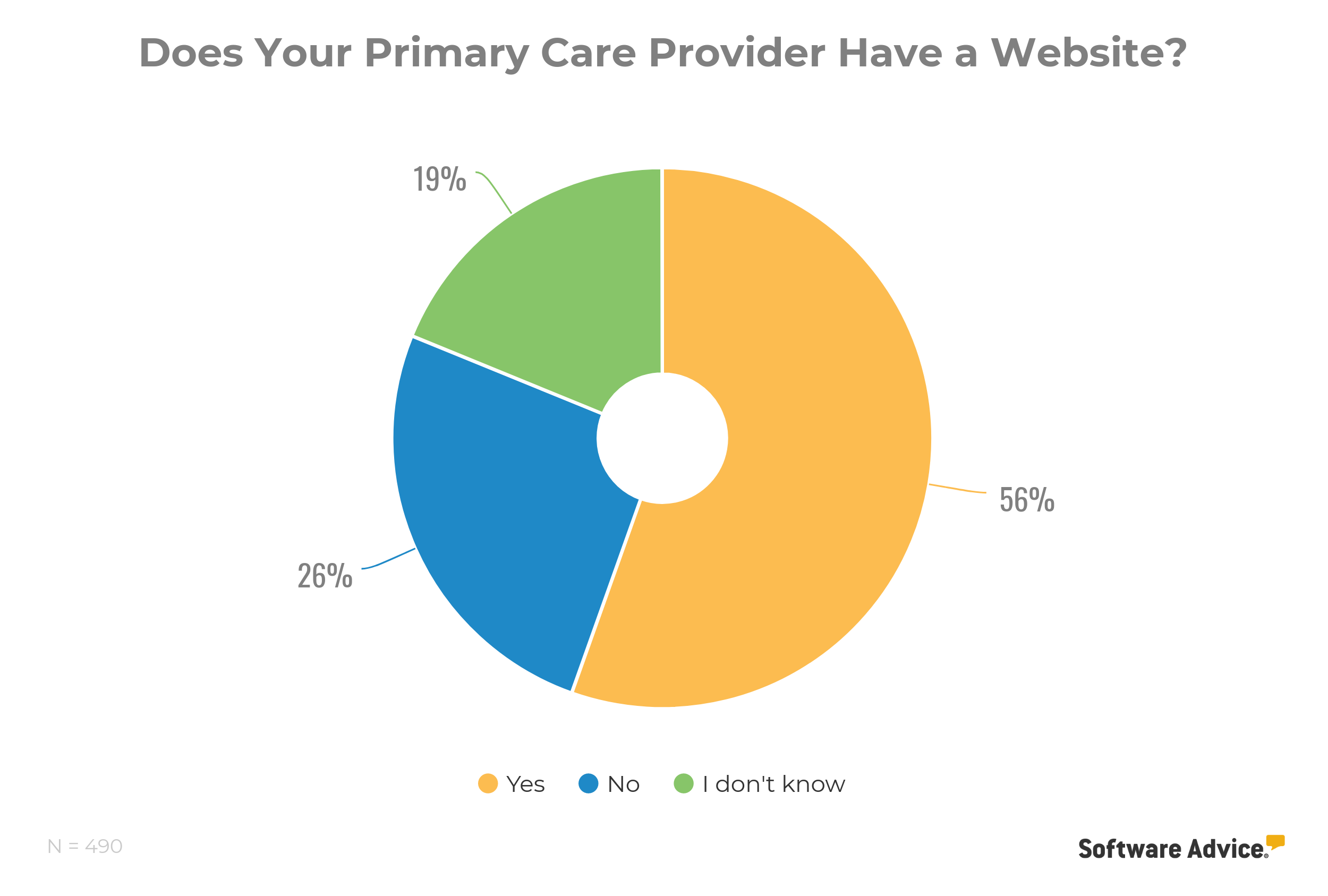
But according to Software Advice’s surveys, physicians who do build personal websites integrated with practice management tools like scheduling and patient portals could attract up to eighty percent more new patients each year. This is a significant opportunity to grow small practices like yours.
Not only will branding yourself online bring in new patients, Mark W. Schaefer thinks creating a personal brand can help you accomplish much more:
I think that every professional can potentially have a sustainable competitive advantage by being known. It’s kind of word-of-mouth on steroids. Where do you want to go next with your career? Attract more patients? Be named to a prestigious board? Maybe write a book or speak someday? To do that, you have to be known.
Mark W. Schaefer, author, business consultant and marketing expert
As great as all that sounds, figuring out how exactly to brand yourself and your practice professionally can be daunting. Given what we learned about patients’ preference for medical practice websites, though, my advice is to start with a medical practice website.
Here’s what we’ll cover:
Personal and Professional Branding are Different, But Not Really
If You Build a Website, They Will Come
Give the Patients What They Want: Online Tools
Next Steps: Managing Your Online Reputation
Personal and Professional Branding are Different, But Not Really
Before you can get started on your website, you’ll want to learn a bit more about what it means to create a brand for yourself and your practice. To do that, let’s take a look at some advice Gartner had for CIOs last year (research available to Gartner members).
According to these analysts, CIOs are facing three major challenges when it comes to branding themselves:
CIOs aren’t aware of how to market themselves in the digital business age.
CIOs aren’t aware of how to build their personal brand or how doing so can reflect positively on their companies.
CIOs aren’t aware of how they can leverage social media or an online presence to market themselves or their companies.
If you own a small medical practice, you might well be wondering what Gartner’s recommendations for corporate CIOs have to do with you. To that I say, “More than you think.” If big companies are struggling to create their brands, these challenges are even more overwhelming to small organizations with fewer resources.
But that doesn’t mean you can’t overcome them. If the challenges of big companies apply to you, then Gartner’s recommendations do as well.
What’s interesting about these challenges is the fact that personal brands are distinct from professional brands, but the two are very closely tied.
Gartner holds that the positive benefits you’ll reap from thoughtfully crafting your personal brand will also affect your business in a positive way.
So what does Gartner say about crafting your brand? Three things:
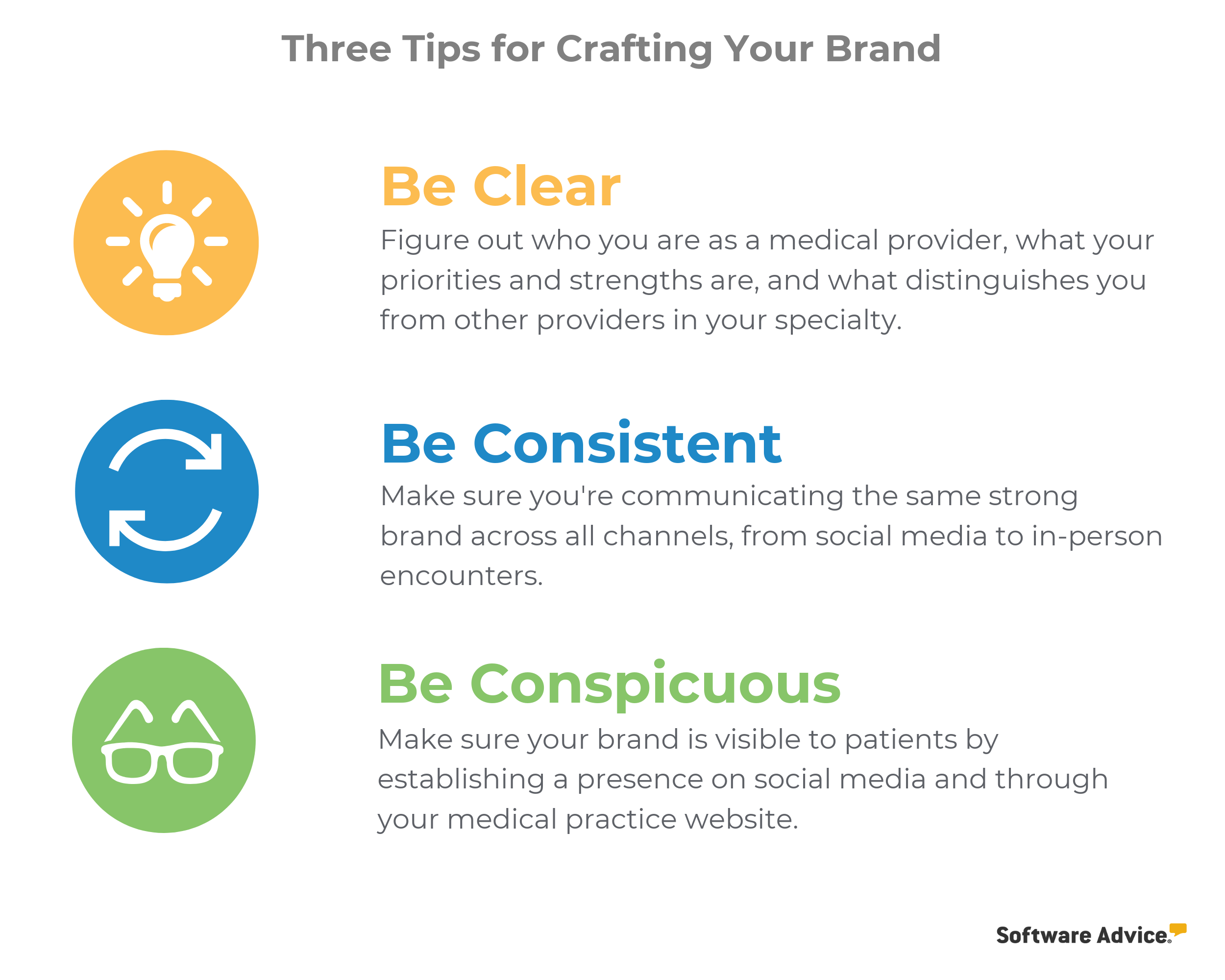
Where to start: With a branding brainstorm. Gather your partners, employees and any other invested parties to think about what your practice does well (or will do, if you haven’t opened yet). Identify how you can distill those traits into clear, concise elements that will be easier to communicate to patients.
If You Build a Website, They Will Come
We recently surveyed 498 U.S. patients to learn about their preferences for medical practice websites. We found that over half (56 percent) of patients’ primary care providers did have their own dedicated practice websites, but more than a quarter of patients’ providers did not.
That’s way too many practices without dedicated medical websites, especially when you consider how much patients prefer practices with websites.
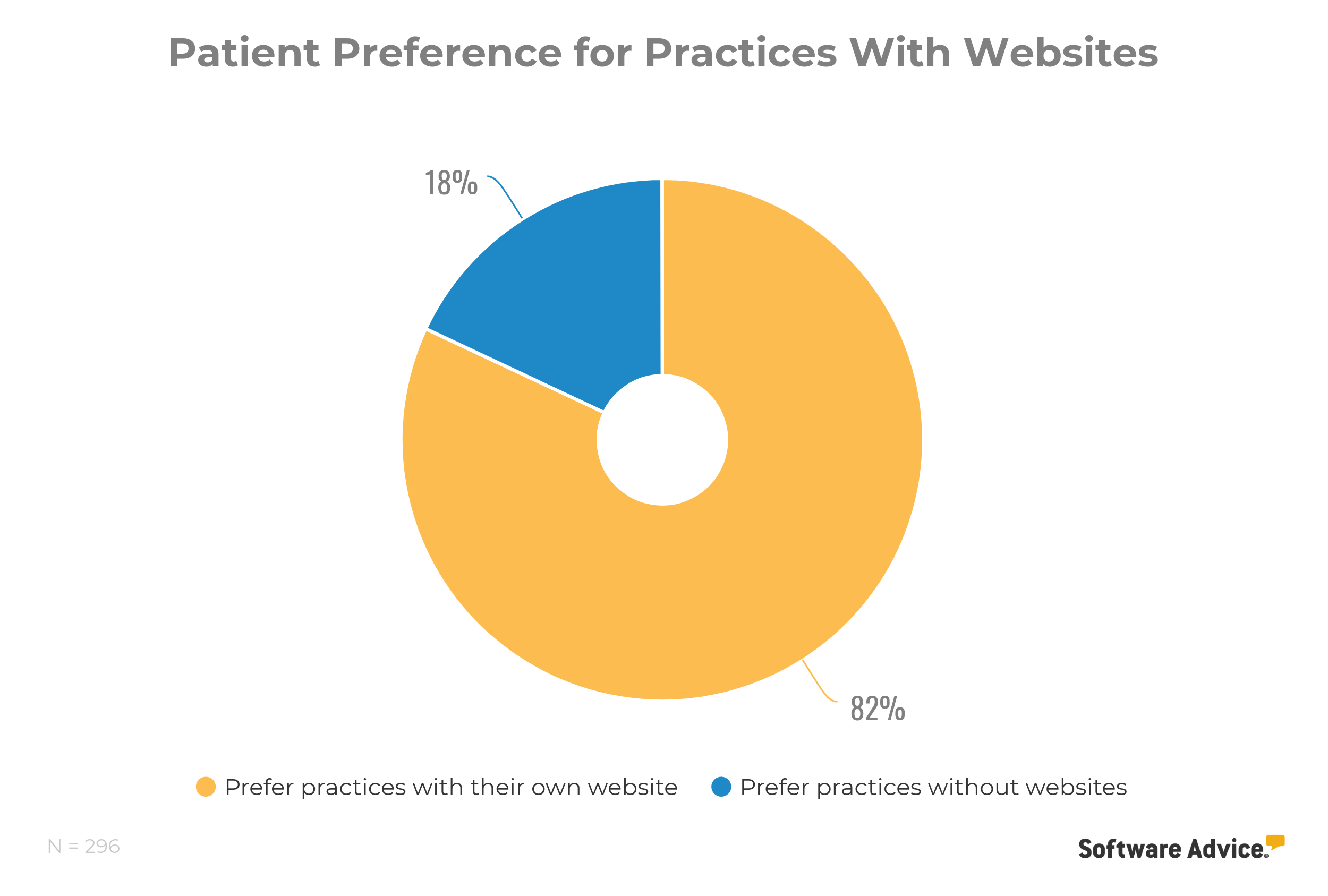
Given this statistic, it’s easy to see that creating a dedicated website for your practice can have a major effect on the number of new patients you bring in, but only if you’re making a good impression with your website.
Where to start: With your website’s goal. Figure out want information you need to provide on your website in order to educate patients about the experience they can expect from you. Then, determine if you have the skills (or the time to learn the skills) to create your own website, or if you’d rather invest funds to bring in an expert.
Give the Patients What They Want: Online Tools
In our survey, we asked patients to select the information and/or tools they typically look for when visiting medical practice websites. We found that the most popular website elements were online tools such as bill payment and scheduling.
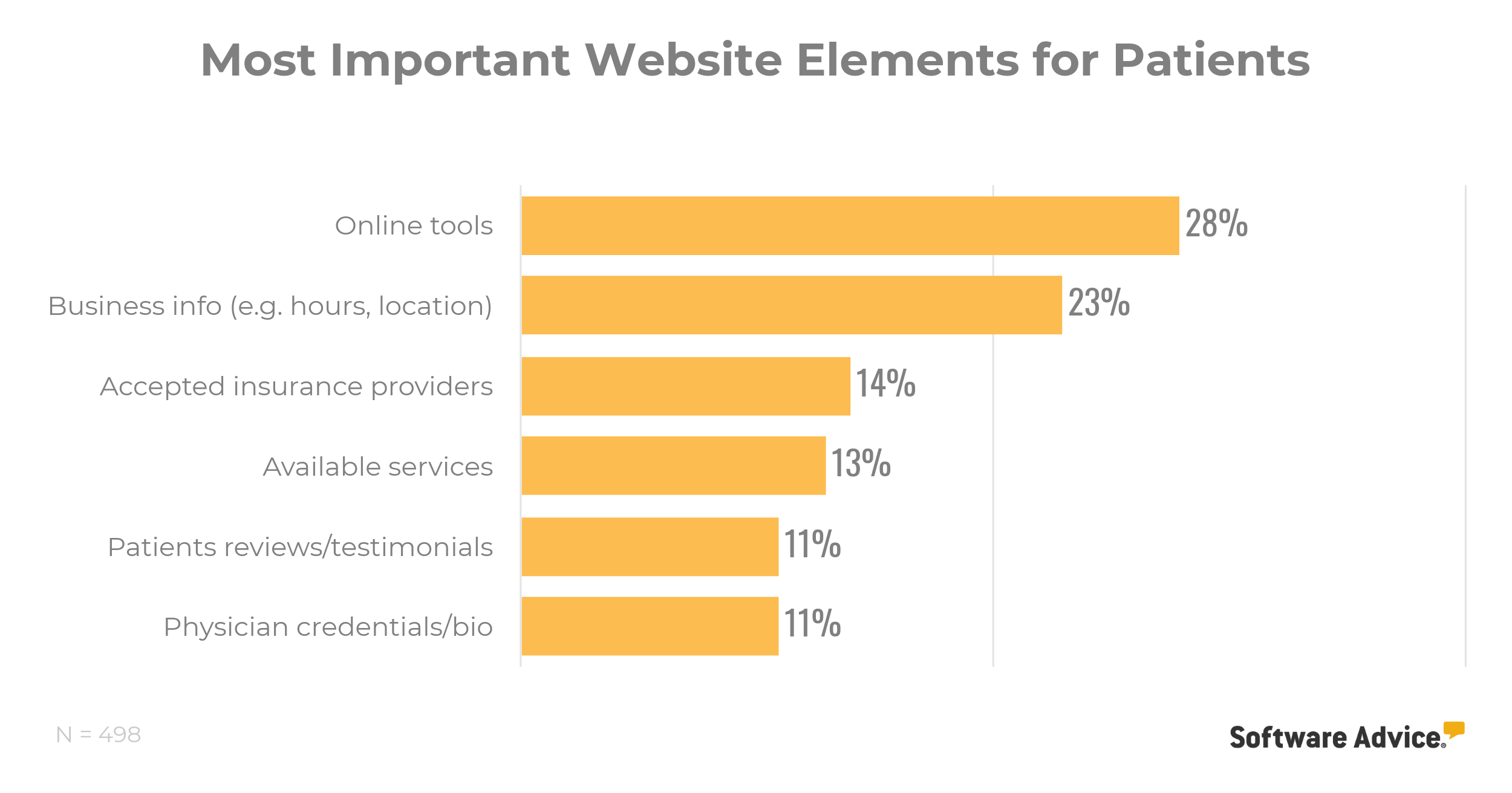
If we break that down further to look at patient preferences for online tools, we find that most patients first look for online appointment scheduling (32 percent), followed by access to a patient portal (29 percent).
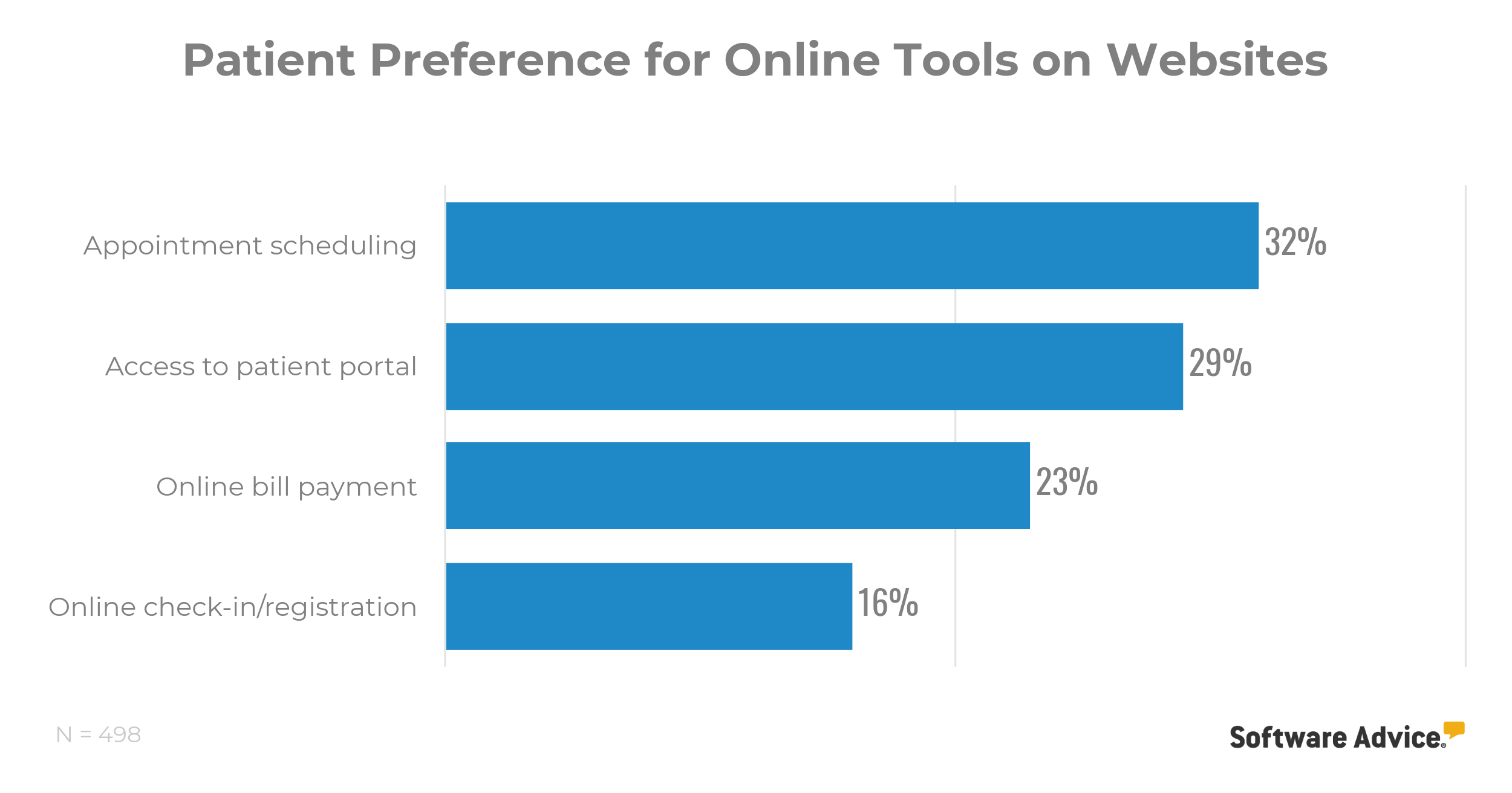
Including information about your hours of operation and the services you offer will be easy since that’s static and won’t require regular updates. This information becomes valuable to consider when determining what kind of software integrations you need to invest in to meet your patients’ needs.
Where to start: With software research. Now’s the time to explore options for things like practice management suites, patient portals, revenue cycle management integrations and online registration software to figure out which options you can afford and which ones your patients will get the most use out of.
Next Steps: Managing Your Online Reputation
It’s important to remember that you’re not done once you’ve established your brand and build your medical practice website. You’re going to have to monitor and manage your brand on a continuous basis, which means finding at least an hour in your week to do so.
For more information on how to protect your brand, check out our report on How Patients Use Online Reviews. In it, you’ll find useful tips from reputation management professionals and software tools that can make your life a lot easier.